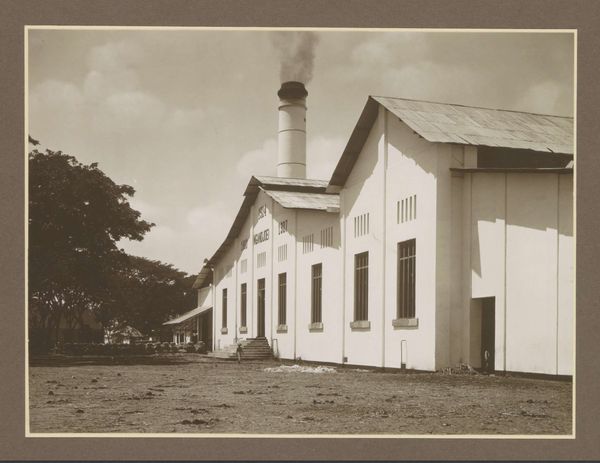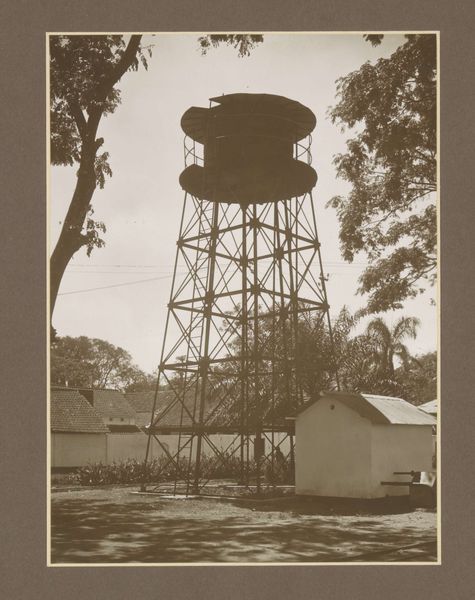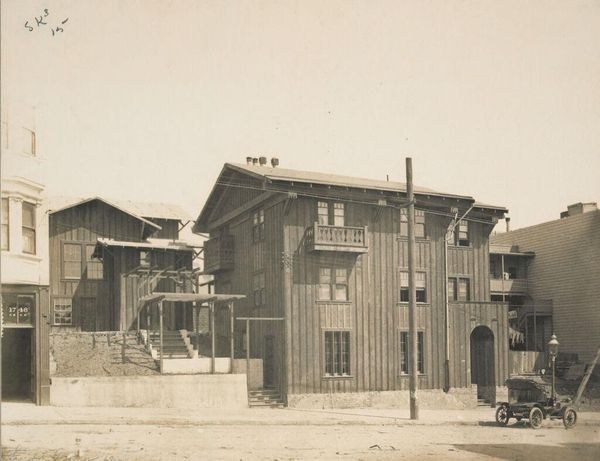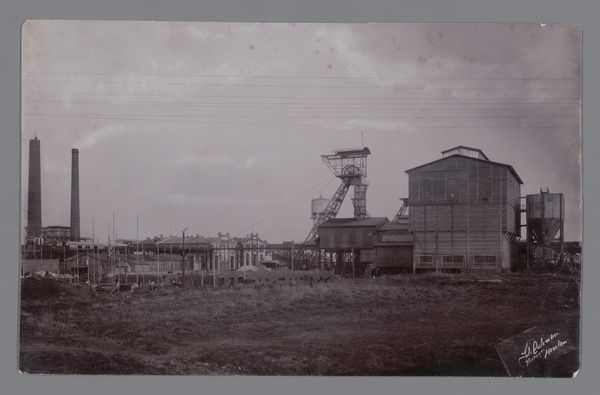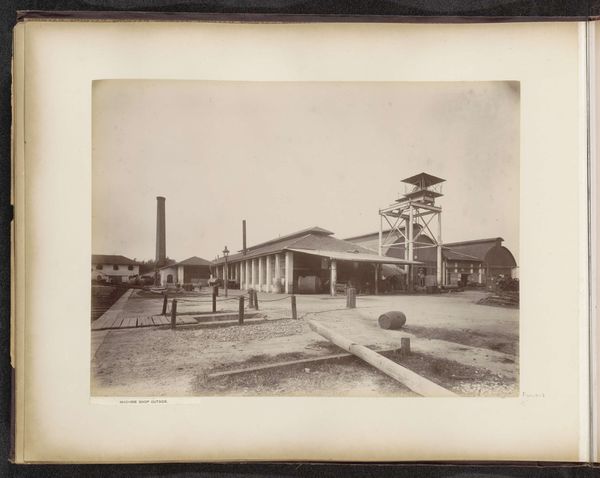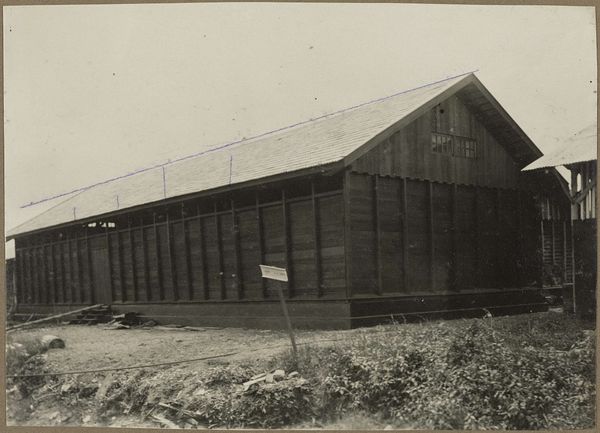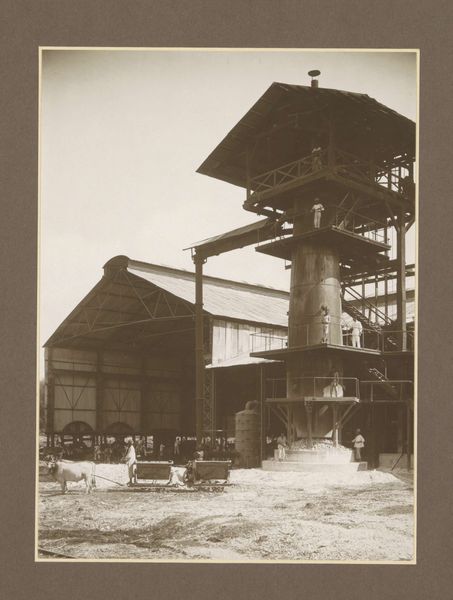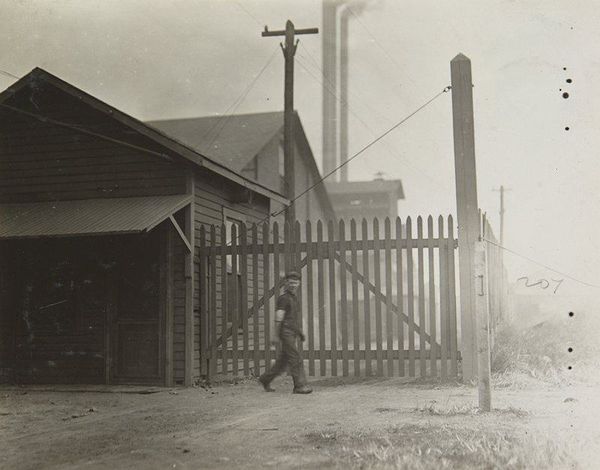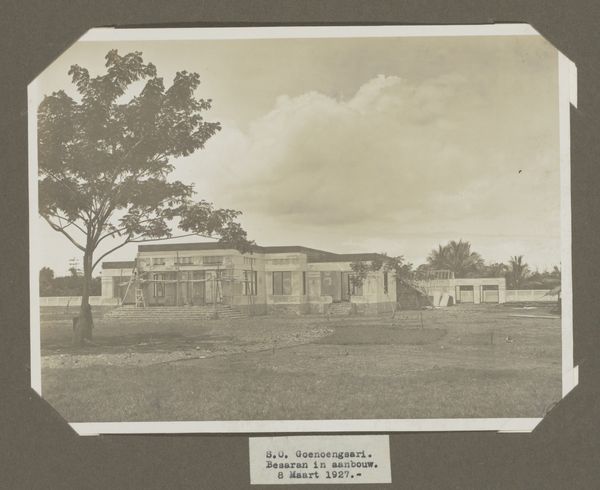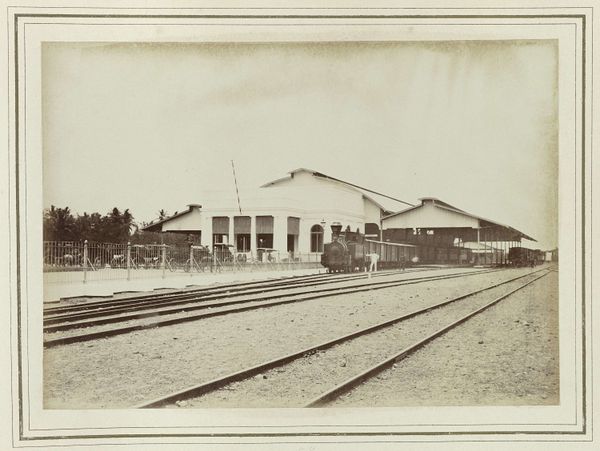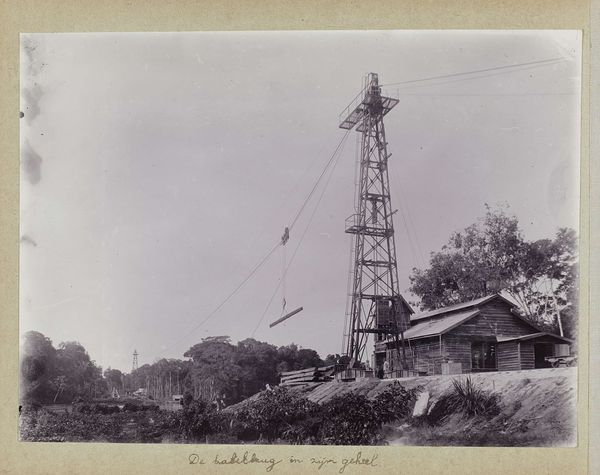
Drinkwatertoren en wasinrichting van suikerfabriek Meritjan te Kediri op Java c. 1925 - 1930
0:00
0:00
photography
#
photography
#
orientalism
#
cityscape
#
building
Dimensions: height 297 mm, width 450 mm
Copyright: Rijks Museum: Open Domain
Curator: This photograph, taken circa 1925-1930, captures the Drinkwatertoren en wasinrichting van suikerfabriek Meritjan te Kediri op Java—that is, the water tower and washing facility of the Meritjan sugar factory in Kediri, Java. Editor: It strikes me as almost bleak, despite the clarity. The stark geometry of the water tower juxtaposed with the simple building…it feels very matter-of-fact. Curator: The image evokes a colonial-era Java deeply entrenched in the sugar trade. We should consider the legacy of Dutch plantations, which depended on complex labor systems and altered local economies and social structures significantly. This water tower signifies progress, perhaps, but for whom? Editor: Precisely. Water is, of course, purification, but also sustenance and source. And the tower—so deliberately constructed— looms like a technological deity over that simple washing facility. What was the symbolism for the workers who relied on these structures daily? Curator: Excellent point. How were these sites visually interpreted by Javanese laborers versus the colonial administration? Power dynamics were undoubtedly encoded into this industrialized landscape. This Orientalist image flattens those nuances. Editor: Perhaps. But look at the structure of the tower itself: a lattice. The symbolism extends. One senses something almost unstable. And the building—clean, closed—its windows like eyes peering back... What’s being cleansed? Is it only clothes? Curator: An interesting counterpoint! I can’t deny how potent the layered symbolism in the tower is—but I remain intrigued by the tension between industrial advance and continued societal inequities present in this historical context. It also feels like a narrative, what stories are housed in those building structures, who moved within them, whose experiences shaped their meanings. Editor: A potent reminder that a photograph, like any artwork, is never truly neutral. Both observer and observed create that initial alchemy of viewing, with both social and cultural forces present.
Comments
No comments
Be the first to comment and join the conversation on the ultimate creative platform.
